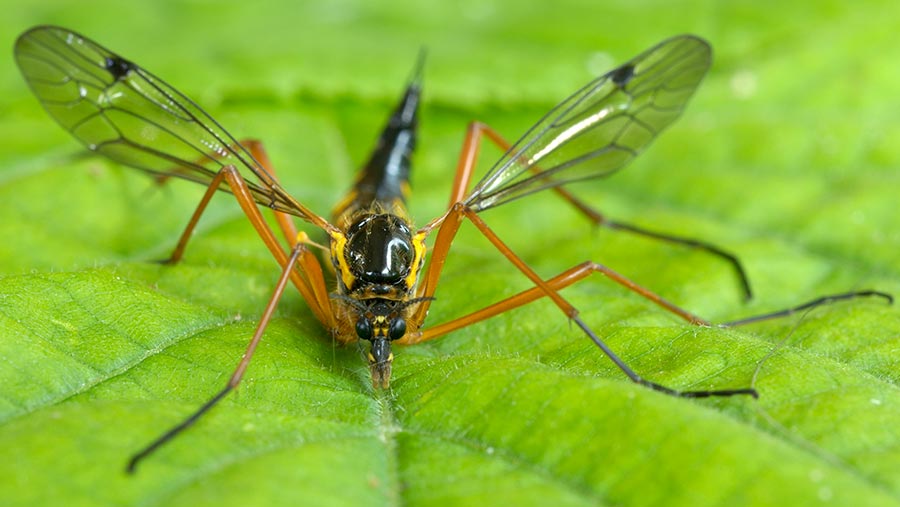Limit leatherjacket damage with good autumn planning
 © FLPA/Rex/Shutterstock
© FLPA/Rex/Shutterstock Assessing autumnal leatherjacket populations in grassland soils could spare Scottish farms substantial spring drilling losses in the face of an insecticide ban.
Between November and February, farms should assess soils for populations of the daddy longlegs or cranefly larvae to avoid “a lot damage”, advises ecologist Davy MacCracken at Scotland’s Rural College.
Earlier this year, chlorpyrifos use on leatherjackets (Dursban) and in many other scenarios were banned.
See also: Pest control challenges ahead as major insecticide is banned
According to Professor McCracken, this year’s high-risk areas are Bute, Dumfriesshire, Kirkcudbrightshire, Perth, Stirling and Wigtownshire.
However, the college’s 2016 survey confirmed that, more generally, populations of leatherjackets, which eat grass roots and stem bases, were at average levels.

Adult cranefly © Malcolm Schuyl/FLPA /imageBROKER/Rex/Shutterstock
His message is that field surveys allow farms options once risks are known.
Densities of more than 0.6 million grubs/ha in field can result in “severe damage”.
Fields for spring drilling for forage crops can then be prioritised.
He adds: “Now is the time to act and plan for the future before the threat of larvae becomes high in all areas.
“A density of more than 0.6 million grubs/ha in a grassland field is, if left untreated, likely to result in severe damage to any cereals subsequently sown into that field in the spring.”
